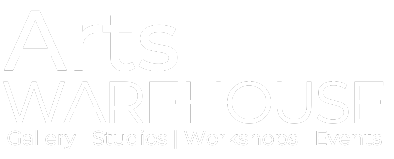TO VIEW ORIGINAL ARTICLE, CLICK HERE
fter experiencing Agata Ren’s new performance art/installation at Arts Warehouse, I may never look at a pile of discarded tree trunks the same way again.
In the raw, pained work, intended by the artist to resemble a crime scene photo, sections of a tree lie dismembered on the gallery floor. Pieces of the wood have flaked off and litter the ground like blood droplets, while Ren pointedly applied bandages around the incision points, treating every piece like a post-op human limb. Glorious peacock feathers, from one of the birds’ accidental deaths, are strewn atop the tableau, suggesting both ritual and roadside memorial—just two examples of the flora and fauna sacrificed at the altar of human progress.
It’s powerful and compassionate stuff, and it speaks to what is almost an unspoken theme of “While You Were Away,” the Arts Warehouse exhibition that opened earlier this month: environmental degradation. The 10 resident artists chosen for “While You Were Away” completed their work during the gallery’s seven-month closure, and there’s not a COVID-related piece among them. Many, however, took a wider view, focusing on the Earth changes—indeed, the Earth crises—that will be with us long after the virus has passed.
Two of the artists, it so happens, were inspired by the overview effect, the profound cognitive shift experienced by some astronauts during spaceflight that our planet is a tiny, fragile, vulnerable celestial object in dire need of our protection. Taber Szuluk conjures a sense of the overview effect in her photographs of Earth surfaces—including remote landscapes in China and Iceland—that look as alien as anything from a Bradbury novel. Renee Phillips’ “Vapor Cloud” re-creates interstellar imagery from Google Earth and NASA satellites using an alchemical combination of latex and spray paint, capturing the abstract, nebulous patterns of our planet from space; I particularly like the way it bleeds off the canvas and onto the gallery wall.
Meanwhile, sculptor Kass O’Brien’s “Anemone” vessels serve as homages to our vanishing coral reefs, their surfaces rife with tiny tentacles in mid-sway. Jill Hotchkiss applied gold to her clean, brilliant tributes to wallflowers and mushrooms, which sprout on her canvases with taxonomic detail and textbook accuracy. Missy Pierce’s miniature collages, with their aloe vera plants, butterfly wings, lobster tails, and fish with a human eyes, bring a jolt of humor to her mixed-media renderings of nature at its wildest.
Not every artist in “While You Were Away” focuses on issues of climate and Gaia, but for those who did, the results are beyond chance, suggesting what most of us know: This is the signal issue of our times, pandemic or not. It also turns up in “Luminous,” Arts Warehouse’s immersive second exhibition, curated by Giannina Coppiano Dwin, Lisa Rockford and Kara Walker Tomé of C3: Contemporary Curators Collective. The dozen artists filling the Warehouse’s back end were chosen for work that “considers light through projection, refraction or glow.”
These include “Endless Horizons,” from artist duo Encoded Objects. It’s a video of weather measurements recorded on a NASA data buoy from a single day in 2017, and projected onto the floor. Attendees are invited to step in the middle of the data, becoming the buoy in a sense, and experiencing physical closeness to the incorporeal concern of climate change.
Participation is also encouraged in exuberant works like Amanda Covich’s “Conversations With Hannah,” which allows spectators to sit in inflatable chairs around a “campfire” consisting of luminescent bubbles filled with artificial hair; and Alette Simmons-Jiménez’s “Suspended Spiral,” a massive, dangling installation, evoking the many spirals of nature and science, that enwraps audience members like a cocoon.
If you feel like you’re being watched the entire time you peruse “Luminous,” there’s a reason for it: “The Trinity,” the three inflated vinyl “eyes,” each 7 feet in diameter, positioned like surveillance cameras from the ceiling. The installation, by Stephanie Cunningham, is meant to evoke either comfort or paranoia; it probably says something about me that I only felt the latter. I’ve read Orwell too many times, not to mention that recent article in the Atlantic about China’s dystopian move toward complete state surveillance. Just take comfort in the fact that “it’s only an art exhibition”—for now.
Both exhibitions run through Dec. 31, and admission is free. Visiting hours are Thursday and Friday from 10 a.m. to 7 p.m., and Saturday from 10 a.m. to 5 p.m. For information, call 561/330-9614.



